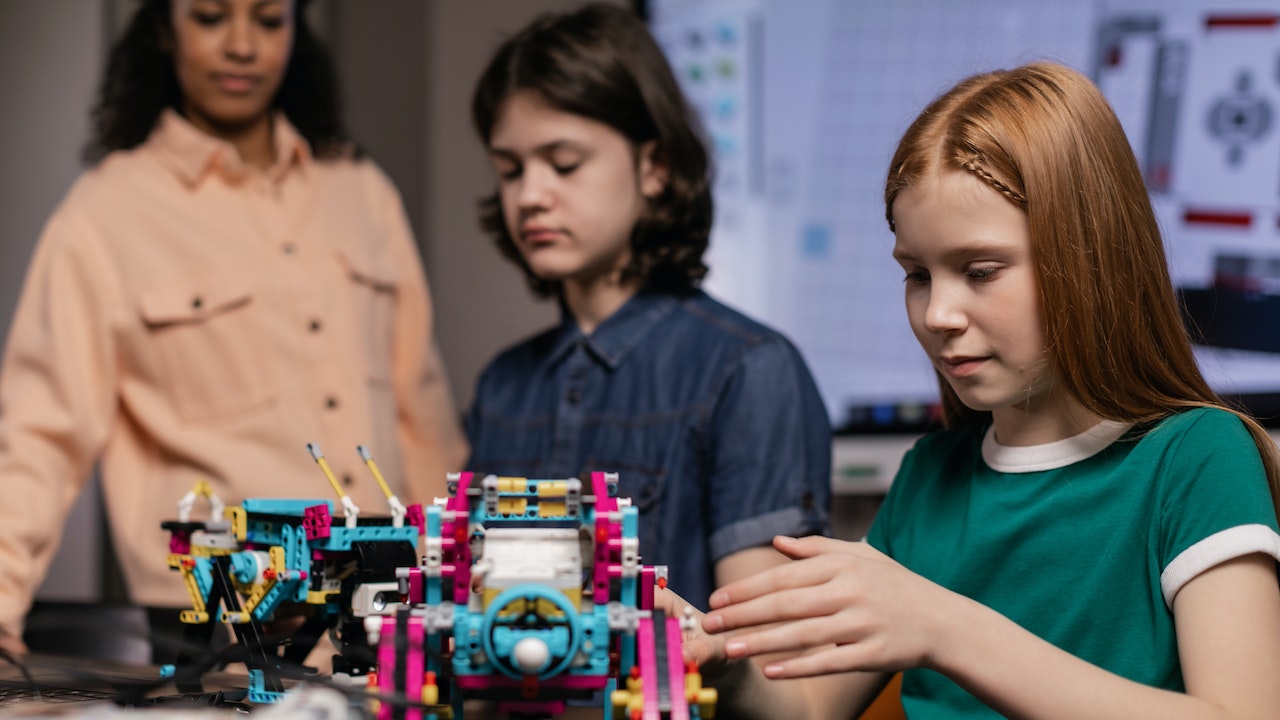Raise and Educate Deaf Children
Comprehensive Guide
Raise and Educate Deaf Children can be a rewarding yet unique journey filled with challenges and opportunities. While every child is unique, deaf children require special considerations and support to thrive in a hearing world. In this comprehensive guide, we will explore the strategies, techniques, and resources that can help parents and educators provide the best possible upbringing and education for deaf children. From early intervention to fostering communication skills and creating an inclusive environment, this guide covers it all.

Table of Contents:
- Understanding Deafness
- What is Deafness?
- Types and Causes of Deafness
- Deaf Culture and Identity
- Early Intervention and Diagnosis
- The Importance of Early Detection
- Seeking Professional Guidance
- Family Support and Adjustment
- Communication Strategies
- Sign Language
- Speech and Auditory Training
- Total Communication Approach
- Educational Choices
- Mainstream Education
- Specialized Deaf Schools
- Homeschooling
- Inclusive Education
- Advocating for Inclusion
- Classroom Accommodations
- Building Inclusive Communities
- Technology and Assistive Devices
- Hearing Aids
- Cochlear Implants
- Assistive Listening Devices
- Emotional and Social Development
- Building Self-Esteem
- Encouraging Social Interaction
- Addressing Bullying and Stereotypes
- Parenting Tips and Strategies
- Effective Communication
- Setting Realistic Expectations
- Balancing Independence and Support
- Celebrating Achievements
- Milestones and Success Stories
- Fostering Ambitions and Dreams
- Supporting Career Development
- Conclusion
- Nurturing the Potential of Deaf Children
- Embracing Diversity and Inclusion
1. Understanding Deafness
1.1 What is Deafness?
Deafness is a sensory impairment that affects a person’s ability to hear and process sounds. It can range from mild to profound, and individuals with deafness may experience varying degrees of hearing loss. Deafness can be congenital (present from birth) or acquired later in life due to factors such as illness, injury, or exposure to loud noise.
1.2 Types and Causes of Deafness
There are two primary types of deafness: congenital and acquired. Congenital deafness is present at birth and may be caused by genetic factors, prenatal infections, or complications during birth. Acquired deafness can occur at any age and is often the result of factors like infections, exposure to loud noise, or aging.
1.3 Deaf Culture and Identity
Deaf culture is a vibrant and distinct community with its own language (American Sign Language, for example), traditions, and values. Deaf individuals often identify strongly with their cultural heritage and may choose to communicate primarily through sign language. Understanding and respecting deaf culture is crucial for parents and educators of deaf children.
2. Early Intervention and Diagnosis
2.1 The Importance of Early Detection
Early detection of deafness is critical for a child’s development. Newborn hearing screening programs are now widely available and can identify hearing loss shortly after birth. Early intervention services can then be initiated, giving the child the best possible start in life.
2.2 Seeking Professional Guidance
Once hearing loss is identified, it’s essential to seek guidance from professionals such as audiologists, speech therapists, and early intervention specialists. These experts can assess the child’s specific needs and recommend appropriate interventions.
2.3 Family Support and Adjustment
A diagnosis of deafness can be emotionally challenging for families. Providing emotional support, seeking information about deafness, and connecting with support groups can help parents and caregivers adjust to the new reality and provide the best care for their child.
3. Communication Strategies
3.1 Sign Language
Sign language is a visual-gestural language used by many deaf individuals for communication. Learning sign language, such as American Sign Language (ASL) or other regional sign languages, can be a powerful tool for both parents and children. It fosters effective communication and allows deaf children to express themselves fully.
3.2 Speech and Auditory Training
Speech and auditory training can be beneficial for deaf children, particularly those using hearing aids or cochlear implants. These therapies focus on improving speech clarity and developing auditory skills. It’s essential to work with experienced speech therapists and audiologists to tailor these programs to the child’s specific needs.
3.3 Total Communication Approach
Many families adopt a total communication approach, which combines sign language, speech, and auditory training. This approach provides flexibility and ensures that a deaf child has multiple avenues for communication. It’s crucial to find the right balance that suits the child’s strengths and preferences.
4. Educational Choices
4.1 Mainstream Education
One option for educating deaf children is mainstreaming, where they attend regular public schools alongside their hearing peers. This approach promotes inclusion but requires careful planning, such as providing support services like sign language interpreters or speech therapy.
4.2 Specialized Deaf Schools
Specialized deaf schools are institutions dedicated to deaf education. They offer a signing environment, tailored curricula, and teachers with expertise in deaf education. Choosing a specialized deaf school can provide a strong sense of community and cultural identity for the child.
4.3 Homeschooling
Some parents choose homeschooling as an educational option for their deaf children. This approach allows for personalized instruction and flexibility in teaching methods. However, it requires a commitment to creating a rich learning environment and accessing appropriate resources. More
5. Inclusive Education
5.1 Advocating for Inclusion
Inclusive education aims to integrate deaf children into regular classrooms to the fullest extent possible. Advocacy and collaboration with educators and school administrators are crucial to ensuring that deaf children receive appropriate accommodations and support.
5.2 Classroom Accommodations
Inclusive classrooms may require accommodations such as captioning, sign language interpreters, assistive listening devices, and modifications to teaching methods. These accommodations help deaf children access the curriculum and participate fully in classroom activities.
5.3 Building Inclusive Communities
Inclusion extends beyond the classroom. Building inclusive communities involves raising awareness, fostering understanding, and promoting acceptance of deaf individuals in society. It’s a collective effort that benefits all members of the community.
6. Technology and Assistive Devices
6.1 Hearing Aids
Hearing aids are common devices used to amplify sounds for individuals with hearing loss. They are suitable for some deaf children, depending on the severity and type of hearing loss. Regular audiology assessments can ensure that hearing aids are appropriately calibrated.
6.2 Cochlear Implants
Cochlear implants are surgically implanted devices that stimulate the auditory nerve, providing a sense of sound for individuals with severe to profound hearing loss. These devices are particularly effective for children if implanted at a young age.
6.3 Assistive Listening Devices
Assistive listening devices, such as FM systems and captioning services, can enhance the learning experience for deaf children in various settings, including classrooms, theaters, and public events. These technologies ensure that auditory information is accessible.
7. Emotional and Social Development
7.1 Building Self-Esteem
Deaf children may face unique challenges related to self-esteem. Encouraging them to embrace their deaf identity, develop self-confidence, and celebrate their achievements can foster a positive self-image.
7.2 Encouraging Social Interaction
Social interaction is essential for emotional development. Encouraging deaf children to engage with peers, join clubs or activities, and participate in community events helps them build social skills and friendships.
7.3 Addressing Bullying and Stereotypes
Bullying and stereotypes can affect any child, but deaf children may be particularly vulnerable. It’s essential to address these issues promptly, educate peers about deafness, and create a safe and inclusive environment for all students.
8. Parenting Tips and Strategies
8.1 Effective Communication
Effective communication within the family is crucial. Parents should be open to discussing feelings, concerns, and achievements with their deaf child. Active listening and using appropriate communication methods are key.
8.2 Setting Realistic Expectations
Setting realistic expectations is essential for the child’s development. Recognize that every child is unique, and progress may vary. Celebrate small victories and provide ongoing support.
8.3 Balancing Independence and Support
As deaf children grow, they seek independence. Finding the right balance between providing support and encouraging independence is a delicate yet vital aspect of parenting a deaf child.
9. Celebrating Achievements
9.1 Milestones and Success Stories
Celebrate the milestones and achievements of your deaf child. These victories can range from academic accomplishments to personal growth and hobbies. Recognizing and celebrating success boosts self-esteem and motivation.
9.2 Fostering Ambitions and Dreams
Encourage your deaf child to dream big and pursue their passions. Provide opportunities for them to explore various interests and talents, whether in the arts, sports, or academics.
9.3 Supporting Career Development
Support your child’s career aspirations by providing guidance and access to resources. Consider internships, mentorships, and vocational training programs to help them achieve their career goals.
10. Conclusion – Raise and Educate Deaf Children
10.1 Nurturing the Potential of Deaf Children
Raising and educating deaf children requires dedication, patience, and a commitment to providing the best possible opportunities. By understanding deafness, embracing communication strategies, and advocating for inclusive education and communities, we can nurture the potential of deaf children and empower them to achieve their dreams.
10.2 Embracing Diversity and Inclusion
The journey of raising and educating deaf children is a testament to the power of diversity and inclusion. By celebrating the unique strengths and perspectives of deaf individuals, we enrich our communities and promote a more inclusive society where all children can thrive. Older Post





